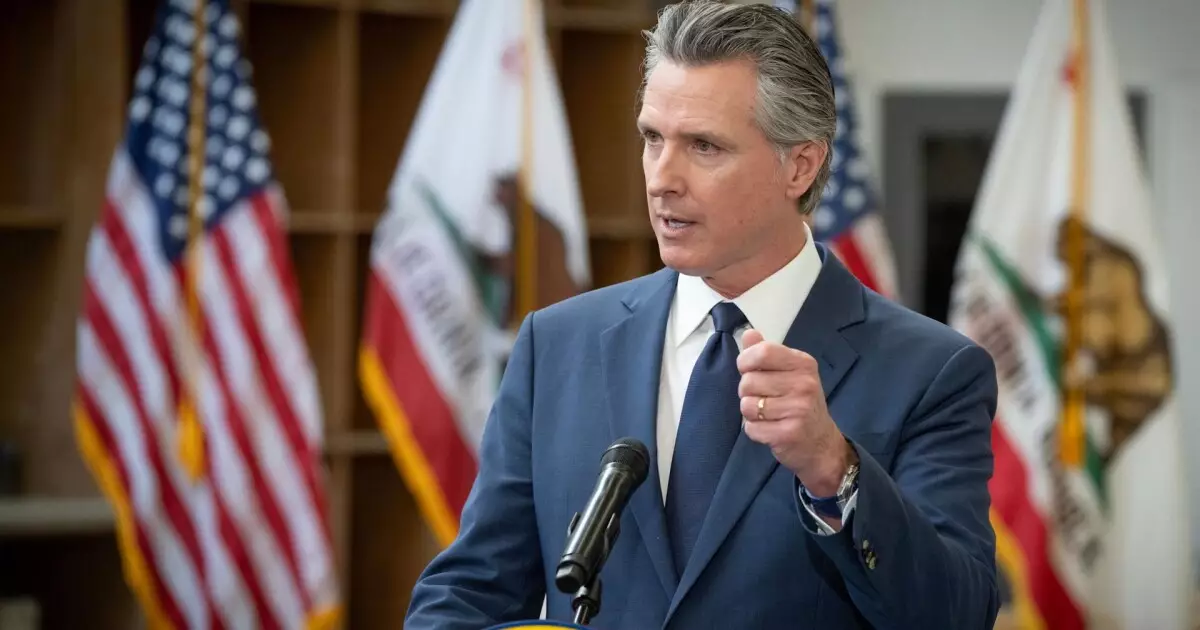In a recent announcement, California Governor Gavin Newsom unveiled a proposed state budget that he claims is fully balanced and devoid of any deficits. With projections boasting an additional $16.5 billion in revenue for the upcoming fiscal year, Newsom attributes this optimistic outlook to a robust economy, favorable stock market trends, and increasing cash receipts. This preliminary information sets the stage for a comprehensive budget proposal, set to be officially released later in the week, which will delve into the specifics of the state’s financial planning for fiscal year 2025-26.
The budget plan presented is not merely a set of numeric projections. Newsom’s address, lasting nearly two hours and featuring extensive media interactions, reflects the significant importance of transparency and engagement with both lawmakers and the public. The forthcoming detailed budget briefing promises further insights from the Department of Finance, which will clarify the governor’s financial roadmap.
Despite the optimistic financial forecast, Governor Newsom remains acutely aware of the looming uncertainties—especially with the incoming Trump administration’s potential fiscal policies. Speculations about drastic cuts to federal programs and taxation could significantly affect California’s financial landscape. Newsom’s tranquil demeanor while reporting on the budget is offset by an underlying concern regarding the potential erosion of federal support, which has been critical for various social programs throughout the state.
In his candid remarks, Newsom referenced the possibility of substantial alterations to the federal budget resulting from Trump’s proposals. He highlighted the precarious nature of California’s reliance on federal funding and the devastating implications that could ensue from a budgetary overhaul, which may include slashing up to $2 trillion from federal programs. This uncertainty necessitates a cautious yet strategic approach to state budgeting.
In light of such uncertainties, Governor Newsom has positioned his administration to maintain fiscal resilience. The budget proposal of $322.2 billion, which includes $228.9 billion for the general fund and contingencies amounting to $16.9 billion, intends to provide a buffer against potential economic downturns or federal funding cuts. The absence of new tax proposals signals a commitment to preserve the financial stability of California residents, even as external pressures mount.
Moreover, the Governor’s request to allocate $25 million towards the attorney general’s office for potential legal contests against federal funding cuts emphasizes proactive governance. This financial maneuver aims to safeguard the interests of California against potential ramifications stemming from federal shifts. Newsom’s description of the legislature’s cooperation in providing resources for legal defenses demonstrates a commitment to collaborative governance and anticipatory action.
Newsom’s acknowledgment of bipartisan efforts within the legislature further reinforces the idea that California’s fiscal health will be sustained through collaborative strategies. By recognizing the historic cooperation with legislative bodies during previous financial crises, Newsom is seeking to cultivate a cooperative climate as California faces new challenges on the horizon.
The governor’s remarks about engaging with fellow governors who share similar apprehensions regarding federal funding cuts illustrate the collective consciousness among state leaders. This solidarity is crucial, particularly as they prepare to navigate potentially turbulent times ahead. The interconnected nature of state finances and federal support leads to an imperative for continued discourse and strategic negotiation across state lines.
While Governor Newsom’s budget proposal reflects a commendable outlook characterized by a balanced financial stance, it must be approached with caution. The potential external influences of a shifting federal landscape cast shadows over California’s fiscal future. As lawmakers and state officials prepare for the unveiling of the detailed budget proposal, the emphasis on resilience, preparedness, and bipartisan cooperation will be integral to navigating the complexities that lie ahead in the state’s financial journey. Ultimately, California stands at a crossroads, balancing optimism for the future while remaining vigilant against the uncertainties of external fiscal policies.

